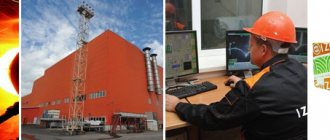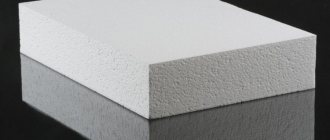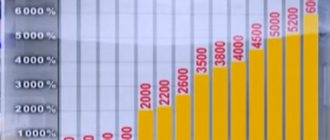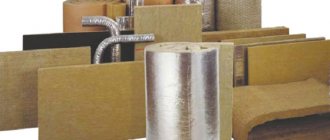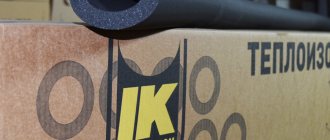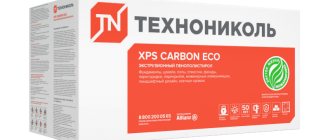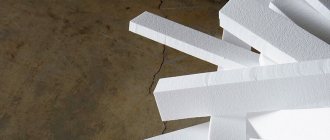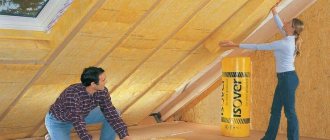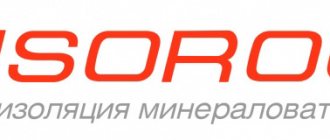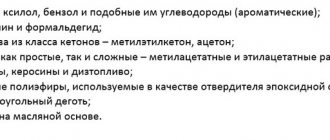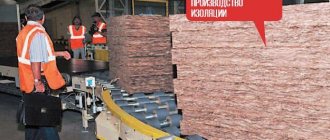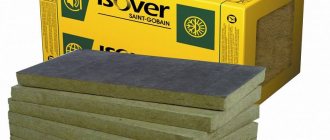Material grades
The production of material of various fractions becomes possible through the use of special chemical components and manufacturing technologies. Each of them has unique properties.
The presence of certain types of expanded polystyrene becomes indispensable when it is necessary to perform specific tasks in construction and repair. Today, the following highly demanded brands of expanded polystyrene are distinguished: PSB S-15, PSB S-25, PSB S-35.
The abbreviation stands for “suspension pressless polystyrene foam.” The second C stands for “self-extinguishing.”
Size range
Expanded polystyrene is produced in accordance with GOST , so the sheets have standard sizes regardless of the manufacturer. Therefore, PSB S 35 , which is always present on the market, has the following sheet sizes:
- Length – from 900 to 5,000 mm.
- Width – from 500 to 1,300 mm.
- Thickness – from 20 to 500 mm.
During production, some deviations from the established norm are allowed. In particular, the linear aspect ratio is 50 mm , thickness: up to 10 mm . Such products are not considered defective and are allowed to be sold through retail and wholesale trade networks.
Most manufacturers manufacture products according to individual customer sizes.
PSB S-15
Lightweight expanded polystyrene boards of the PSB C-15 brand are the cheapest material in this series. Externally, the thermal insulation base consists of slabs of fused white granules. This expanded polystyrene is environmentally friendly, perfectly repels moisture, “does not age” and is not exposed to microorganisms.
Characteristics
The main distinctive qualities of polystyrene foam PSB-15:
- density is about 10-12 kg/m3;
- compressive strength – 0.04 MPa;
- thermal conductivity index – 0.043 W (mK).
Application
PSB-15 foam is used mainly when it is necessary to insulate building structures that are not susceptible to significant loads and intense exposure to environmental factors. The use of such foam plastic seems appropriate for insulating attics, wooden floor coverings, interior partitions, and residential temporary containers.
PSB S-25
Medium density polystyrene foam boards. The most popular brand of material. Designed specifically for insulation of building facades.
It features optimal qualities for such purposes: ideal density and high fire resistance. In addition to creating high-quality thermal insulation, the installation of PSB S-25 foam plastic helps to improve the sound insulation of structures.
Properties
- density from 15 to 17 kg/m3;
- thermal conductivity – 0.041 W (mK);
- compressive strength – 0.08 MPa.
Scope of use
Expanded polystyrene boards PSB-25 are used for insulation of walls, facades, floors, attics, loggias, roofs in buildings for various purposes. More often, the material is laid using the wet installation method under plaster.
It is recommended to use such foam plastic for heat and sound insulation of structures that are subject to significant mechanical loads. Thanks to their unique characteristics, the use of PSB-25 slabs becomes possible for pipeline insulation.
The main misconceptions about the use of foam plastic in facade insulation.
Over the past twenty years, polystyrene foam, or more correctly, expanded polystyrene, has firmly entered our lives.
The most valuable quality of expanded polystyrene is its low thermal conductivity. It holds heat great! This property began to be used in the construction industry. Today, insulating facades with expanded polystyrene can significantly reduce costs in the construction of multi-story buildings for various purposes and effectively reduce heat loss at home in private housing construction.
Let's compare other popular building materials:
Mineral wool 0.034-0.039
The higher the numbers, the colder the material. For façade insulation, PSB C 25 f grade is used. This is one of the most effective insulation materials.
Stands for " P"
expanded
polystyrene
S B
epressovy
S
self-extinguishing density
25
(250 grams of styrene per m3),
façade
.
So let’s look at the fears associated with the use of expanded polystyrene.
There is such a property of materials as vapor permeability. It is this property that determines whether a material breathes or not. Let's look at the numbers.
Vapor permeability of expanded polystyrene
0.05 Mg/(m*c*Pv)
And now attention! Pine or spruce across the grain—0.06!
That is, the vapor permeability of polystyrene foam is the same as that of a wooden frame! And even better than concrete!
But if there is a main source of combustion, for example wood, then the foam will burn along with it and, at the same time, emit quite toxic smoke!
In more than twenty years of work experience, I have never encountered mice in foam plastic. Mice can live in many places, but they don't live in foam. They just don't feel comfortable there. Field mice organize nests in the area in ordinary grass under the snow.
Pets are more likely to sneak into the house than to settle on the street. Mice live where there are many exits from the nest and close access to food. These are places under terraces, gazebos, bathhouses, even under the house. And of course in the house. In the polystyrene foam they have nothing to breathe and nothing to eat. They can chew through the passage, but they will not live there.
Only rats make nests in polystyrene foam. But, again, not on the facade! And in loose sheets stored in a barn, garage or basement.
I noticed that even insects do not settle in the foam.
Indeed, polystyrene foam is afraid of direct sunlight. In the sun, it begins to fade in the literal sense of the word. It turns into dust. True, it’s very slow. About five millimeters per year.
Therefore, it must be covered with glue with a mesh. The mesh plays a reinforcing role, and the glue protects from bad weather and sun. You can paint or apply fashionable decorative plaster on top, or even cover it with tiles.
Closed foam is practically not subject to any influences. It can withstand temperatures up to 80 degrees, does not shrink, and is not afraid of moisture (unlike mini-slabs).
When we dismantled the old facades, the polystyrene foam always looked like new. The glue on it sticks like a glove, the foam itself breaks off rather than the glue! Very strong construction!
When the thickness of the walls is one and a half bricks, you need to use foam plastic with a thickness of 100-120 mm. This is quite enough. The house will be warm and comfortable.
Not only will all the finishing come off in a year, because it is treated with paraffin, but it also has practically no vapor permeability. 0,013.
Here, you will definitely wrap your house under film!
Source
PSB S-35
Compared to polystyrene foam boards of the previous brand, this type of material has higher strength and also has low thermal conductivity.
PSB S-35 foam plastic is in demand when it is necessary to perform work where the ability of the insulation to withstand serious mechanical loads comes first.
Specifications
- density – 26-27 kg/m3;
- thermal conductivity index – 0.038 W (mK);
- compressive strength – 0.14 MPa.
Application area
Expanded polystyrene grade PSB S-35 is used as insulation in the construction of flat roofs, floors and ceilings that are subject to increased mechanical loads. The material demonstrates high efficiency when insulating basement floors and foundations of permanent structures.
PSB S-35 foam is used when it is necessary to protect the soil from freezing. In particular, such slabs become indispensable when laying coverings for sports fields and thermal insulation of swimming pools.
The use of polystyrene foam PSB S-35 allows you to avoid freezing of foundations during construction in areas with groundwater close to the surface.
Foam grades (marking)
In this article: details about the labeling of this material, useful recommendations are given to those who are planning to purchase it.
Advice : read how harmful polystyrene foam can be - the article makes you think. Also look at what rodents do with this material (you’ve probably never seen anything like this before).
Now let's move on to the topic of the article.
Have you decided to use this material in building a house? Have a question about the brand of polystyrene foam? Now we will look at this. In this case, we will take into account the products of domestic manufacturers.
Advantages and disadvantages
Expanded polystyrene PSB has the following obvious advantages:
- Thermal insulation properties. More than 90% of the insulation consists of air. The presence of a granular structure explains the high heat retention capabilities.
- Moisture resistance. The structural components of the material do not accumulate moisture and do not swell upon contact with liquids. Therefore, foam plastic boards are widely used for insulating facades and foundations of buildings.
- Chemical resistance. Even prolonged contact of expanded polystyrene with fairly aggressive chemicals allows the material to retain its original properties.
- Fire resistance. Combustion of the material occurs only when exposed to a temperature of about 500 °C. This indicator is several times higher than the ignition point of wood.
- Durability. When used correctly, polystyrene foam insulation can last more than 3 decades.
Among the disadvantages of the material, it should be noted the formation of joints that have to be insulated. An obvious disadvantage compared to common heat insulators is also the high cost of such high-strength insulation brands as PSB S-35. Among other things, polystyrene foam does not allow moisture to pass through. Therefore, during installation you often have to think about ways to create ventilation gaps.
Pros and cons of the material
Among the main advantages of the PSB-SS heat insulator, special attention deserves:
- Effective thermal insulation, which is achieved through a special granular structure.
- Increased resistance to moisture.
- Resistance to aggressive chemicals.
- High fire resistance, which exceeds the temperature limit sufficient for wood to ignite.
- Long service life, which with proper installation can last for several decades.
If we talk about the disadvantages, we can note the need for additional insulation of cold bridges when laying thermal insulation boards end-to-end. Among the obvious disadvantages, it is also worth highlighting the relatively high prices for certain brands of heat insulation. In some cases, when laying the material, it is necessary to look for rational ways to organize effective ventilation, since the insulation practically does not allow moisture to pass through.
Working with material
When performing the bulk of thermal insulation work, polystyrene foam boards PSB S-15 and PSB S-25 are used, which have an optimal thickness of 5 to 10 cm. If the building is insulated during the construction stage, the material is laid under the cladding layer of the structure. External cladding of surfaces allows you to save valuable internal space when insulating an already finished building.
Expanded polystyrene is applied to previously prepared, smooth and primed surfaces. The gaps that form between the slabs are filled with construction foam. To secure the material, it is advisable to use special adhesives, mastics, and cement mortars.
When installing polystyrene foam, the adhesive base is evenly applied to the coating with a spatula. Next, sheets of material are sequentially applied to the surfaces and aligned according to pre-prepared beacons. To securely fasten the slabs after drying, it is recommended to fix them with plastic dowels.
